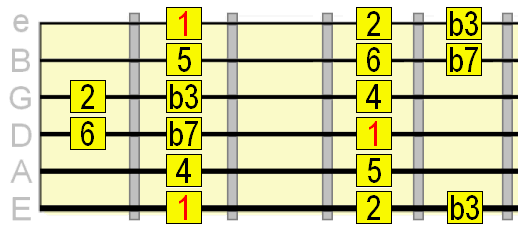Into the Dorian Mode
How to Use The Dorian Mode
Dorian
is like any other scale -
it has it's own melodic flavour and can be played over chords and certain progressions.
This lesson will not only show you the essential patterns and theory for playing
Dorian ,
but you'll also learn, through the aid of ear training audio and backing tracks, when it sounds good to use.
Before you start with the presentation below, make sure you have a basic knowledge of the major scale (as Dorian
is one of its modes).
So this is not for beginners, but I've tried to break it down as simplistically as possible. A lot of this is about ear training, so you rely less on charts to tell you what to play

